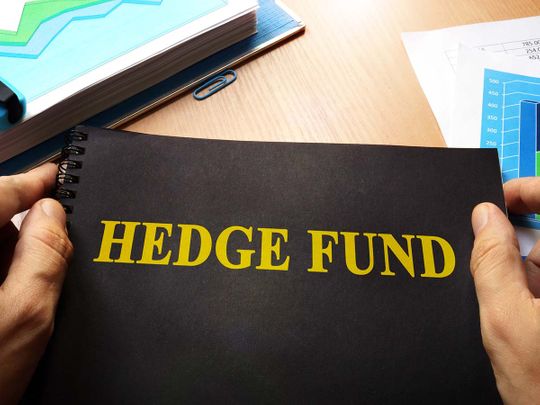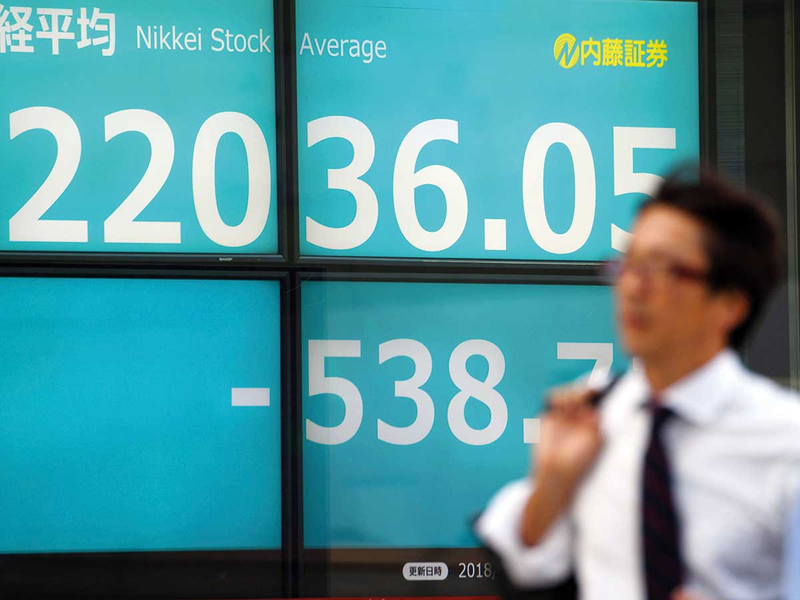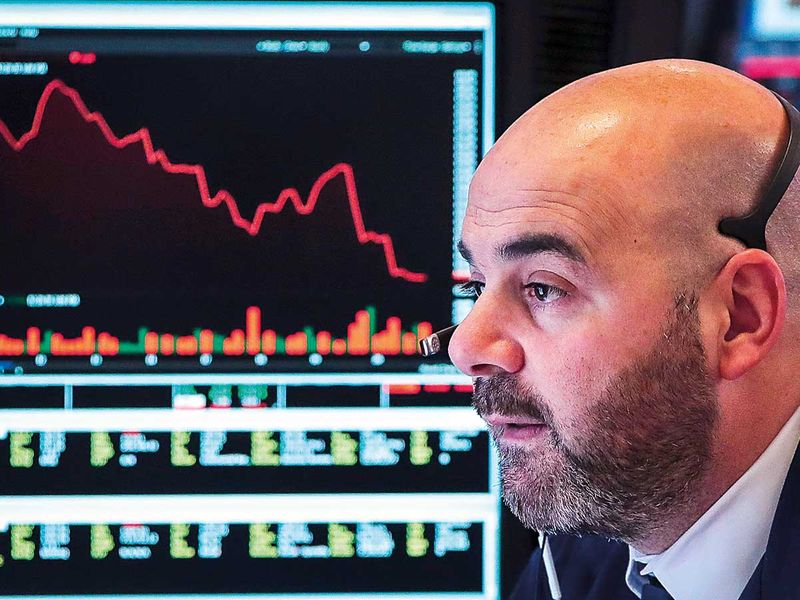
Throughout time investors have looked for ways to maximize profits while minimizing risk. The issue of shielding an investment from market risk is attempted and aimed for, but not always deemed effective.
However, a lot of investors have found that by capitalizing with alternative investments, they can try to mitigate loss and preserve capital. These alternative investments are called hedge funds.
see also
The issue of shielding an investment from market risk is attempted and aimed for, but not always deemed effective.
So how should one define these hedge funds?
To put it simply, a hedge fund is nothing but an alternative investment that – as the name suggests – is designed to protect or ‘hedge’ investment portfolios from market uncertainty, all the while generating positive returns in both up and down markets.
Ultimately unscathed and relatively unregulated in most financial markets, the hedge fund space remains enormous in scope, risky in appetite and exclusive by design.
A hedge fund is an investment fund that trades in relatively liquid assets and is able to make extensive use of more complex trading, portfolio-construction and risk management techniques to improve performance, such as short selling, leverage and derivatives.

During times of economic uncertainty and other instances investors are increasingly looking for investments that offer greater liquidity.
Hedge funds provide this liquidity, with investors being able to access their capital, on average, every 1.4 months with 34 days’ notice and a 6 month initial lock-up period.
However, on the topic of liquidity, hedge funds tend to be much less liquid than mutual funds. They typically require investors to lock up money for a period of years.

Who invests in a hedge fund?
The primary investors in hedge funds are institutional investors, who are professional investors who manage large amounts of cash. They mostly work for pension funds for corporations, government workers, and labor unions.
They are otherwise known as “sophisticated investors” and regarded as those who do not need the protection provided by the regulations that apply to mutual funds. These are entities, or wealthy individuals that must pass either an “accredited investor” test or a “qualified purchaser” test.
read also
- Top five reasons experts give for why your money isn’t growing
- Investment guide: Which stocks and sectors gained the most in the first 100 days of COVID-19 - and which had the most to lose?
- UAE: Here are 5 smart tips to invest when you’re running low on cash and make money!
- UAE can be one of the several migration options if you're seeking tax residency through investment!
The primary investors in hedge funds are institutional investors, who are professional investors who manage large amounts of cash.
These are entities, or wealthy individuals that must pass either an “accredited investor” test or a “qualified purchaser” test.
It can also be an entity with assets exceeding $5 million (Dh18.37 million). A qualified purchaser is someone with over $5 million (Dh18.37 million) who invests in total assets, or one of a number of entities.
Hedge funds are prohibited from advertising their funds to the public.
However, some hedge funds choose to register with their respective country’s regulator to enable them to have a lower minimum investment requirement, and an unlimited number of investors.

What are the main investment strategies used by hedge funds?
• Global macro strategies
In the global macro strategy, managers make bets based on major global macroeconomic trends such as moves in interest rates, currencies, demographic shifts, and economic cycles.
Bridgewater is the most famous example of a global macro fund.
• Directional hedge fund strategies
In the directional approach, managers bet on the directional moves of the market (long or short) as they expect a trend to continue or reverse for a period of time.
A manager analyzes market movements, trends, or inconsistencies, which can then be applied to investments in vehicles such as long or short equity hedge funds and emerging markets funds.
Fund managers find investment opportunities in corporate transactions such as acquisitions, consolidations, recapitalization, liquidations, and bankruptcy.
These transactional events form the basis for investments in distressed securities, risk arbitrage, and special situations.

• Relative value arbitrage strategies
Relative value arbitrage hedge fund strategies take advantage of relative price discrepancies between different assets or securities whose prices the manager expects to diverge or converge over time.
Sub-strategies in the category include fixed income arbitrage, equity market neutral positions, convertible arbitrage, and volatility arbitrage, among others.
Relative value arbitrage hedge fund strategies take advantage of relative price discrepancies between different assets
• Long/short strategies
In long/short hedge fund strategies, managers make what are known as “pair trades” to bet on two securities in the same industry.
For example, if they expect Coke to perform better than Pepsi, they would go long Coke and short Pepsi. Regardless of overall market trends, they will be okay as long as Coke performs better than Pepsi on a relative basis.

These fees are generally paid monthly or quarterly and help pay overhead and daily expenses of running the hedge fund.
Performance Fees are calculated as a percentage of the funds profits. This is an incentive fee: if the fund makes money they will get paid, if not they won’t.
This incentive fee motivates the fund to generate excess returns. These fees are generally used to pay employee bonuses and reward staff.
A high water mark helps to protect investors in a scenario where the fund starts to lose money. This is a loss carryforward provision that will only be revered if the fund makes back those losses.
Before we look at an example to explain this, let’s look at the most common compensation structure.
What does it mean for most hedge funds to charge a ‘2 and 20’?
The 2 and 20 is a hedge fund compensation structure consisting of a management fee and a performance fee.

The 2 and 20 or the ‘Two and Twenty’ is a hedge fund compensation structure consisting of a management fee and a performance fee.
A 20 per cent performance fee is charged on the profits that the hedge fund generates, beyond a specified minimum threshold.
Again, the 2 per cent fee is charged on the assets under management regardless of the performance of the investments under the fund manager (flat rate).
However, the 20 per cent fee is only charged when the fund achieves a certain level of profit.
As one might have deduced, the 20 per cent performance fee is the biggest source of income for hedge funds. The performance fee is only charged when the fund’s profits exceed a prior agreed-upon level.
A common threshold level used is 8 per cent, which means that the hedge fund only charges the 20 per cent performance fee if profits for the year surpass the 8 per cent level.
As one might have deduced, the 20 per cent performance fee is the biggest source of income for hedge funds.

Then the 20 per cent performance fee will be charged on the incremental 7 per cent profit above the 8 per cent threshold.
If the hedge fund manages assets of 10 large investors and makes a sizeable profit, its income for the year may run into millions – sometimes billions – of dollars.
But are such exorbitant charges justified? Some investors consider the common 2 and 20 hedge fund fee structure excessively high. Nonetheless, the industry has maintained this compensation structure over the years.
The industry has been able to maintain such an exorbitant compensation structure primarily because hedge funds have consistently been able to generate high returns for their investors.
Therefore, clients have been willing to put up with the fees, even if they consider them somewhat exorbitant, in order to obtain very favorable returns on investment. (ROI)
Can an average investor get hedge fund exposure?
Now that we have seen who hedge funds mostly cater too, a question that can definitely arise at this point is whether small investors too can ‘get a piece of this action’ or jump in on this money train i.e. hedge funds.
Here is the catch. Investors with limited savings need to protect capital as much—or even more—than the wealthy.
Hedge funds make sense for investors looking to invest in equities with a medium-to long-term horizon, because they offer better risk-adjusted returns across the board.

Hedge funds are known to provide what is technically referred to as ‘more upside participation for a lot more downside protection’, which simply means ‘to get in on potential higher investment, one must be willing to invest more to help protect one's investment from going south’.
The use of options or other hedging instrument in order to limit or reduce losses in the case of a decline in the value of stock is very common.
The good news is, over the last several years, hedge funds have become increasingly accessible to the everyday investor, with minimum asset requirements in Canada, Europe and several other countries, dropping to as low as $5,000 (Dh18,365), but such hedge funds are still yet to grow rampant.
Granted, investors can also now choose from a growing number of "lite" hedge funds, which have more affordable minimum investments, but the lowest ones among these, however, start at $100,000 (Dh367,305). For most investors, that is hardly spare change.
Investors can also now choose from a growing number of "lite" hedge funds, which have more affordable minimum investments

The closest most small investors can get to hedge-fund-like investing is through "alternative" mutual funds.
Although these mutual funds don't charge performance fees like hedge funds do, they collect hefty annual management fees that in some cases approach 4 per cent of assets – a topic we will discuss this topic in detail next.
Affordable hedge-like mutual funds
Like actual hedge funds, hedge-like mutual funds also follow various strategies, but they are much more transparent and less controversial than their counterpart.
According to investment research company Morningstar, about 75 mutual funds employ hedging strategies.
Like actual hedge funds, hedge-like mutual funds also follow various strategies, but they are much more transparent and less controversial than their counterpart.
As with hedge funds, most of the money in these newer mutual funds is in portfolios that use a long/short investing strategy:
They can both bet on individual stocks going up (in industry parlance, "going long") and profit from others going down ("shorting").
Some hedge-like mutual funds cost as much as 3.89 per cent, and a couple cost more than 5 per cent annually. That’s cheap compared to real hedge funds, though.
They get something like a 2 per cent fee and then 25 per cent of the profits if they make money. And then nothing happens if they lose money.
Most experts believe that getting exposure to the asset class is worth the fees in some cases.

Key perk of investing in long/short mutual funds over hedge funds
One advantage long/short mutual funds have over hedge funds is transparency.
While most sizable hedge funds disclose their stockholdings on a quarterly basis, they don't share information about their short positions and debt holdings.
By contrast, long/short mutual funds must provide a public list of quarterly positioning, along with other data. As such, investors can track a manager's views, and decide whether they agree with them.
Long/short mutual funds also can be bought and sold on a daily basis, unlike a hedge fund.
Hedge funds are typically accessed only by wealthy individuals or institutions, are illiquid in the short run and charge very high fees.
In contrast, ETFs can be accessed by anyone, are highly liquid in the short run and charge low fees, typically. So how can an ETF possibly look like a hedge fund?
The simplest approach would be for the ETF to hold hedge funds in its basket. But it can't—hedge funds are subject to lockup periods, while ETF assets need to be traded daily.

While ETFs can't hold hedge funds, they can act like one.
In short, ETFs can deliver many popular hedge fund strategies, like the one touched upon earlier - long/short. Hedge Fund ETFs allow investors to easily access popular trading and investing strategies employed by hedge funds.
Hedge Fund ETFs attempt to mimic hedge fund strategies, but without hefty annual fees or a percentage of the profits earned, which is typical in the hedge fund industry. Many hedge funds ETFs invest in individual stocks, ETFs, futures, short positions, and derivatives.
Hedge Fund ETFs attempt to mimic hedge fund strategies, but without hefty annual fees or a percentage of the profits earned, which is typical in the hedge fund industry.
Core hedge fund strategies are available as low-cost and transparent ETFs and the performance of hedge fund ETFs has been comparable to that of their benchmarks. However, ETFs have only captured 1 per cent of hedge fund assets worldwide.
Regulation occurs at three levels: regulating the hedge fund manager, regulating the hedge fund product, and regulating the distribution of hedge fund product to investors.
Until recently, outside of the US, hedge funds were almost always “offshore”, creating a maze of potentially different regulatory jurisdictions on each of these levels.
However, this did not always happen in practice because hedge funds were largely unregulated, or lightly regulated, as long as distribution was restricted to sophisticated investors, often high-net-worth clients of private banks.

Now this is changing, and new prospects are opening up for hedge funds, this market expansion could create a compliance burden which, depending on systems implications, can be a major resource drain for hedge fund managers.
Over the last two decades, hedge fund industry has come under increasing regulatory scrutiny and compliance. Though the industry has been moaning about the changes, it has been learning to live with the regulatory changes.
Over the last two decades, hedge fund industry has come under increasing regulatory scrutiny and compliance.
Some of the key regulatory initiatives include; AIFMD (the Alternative Investment Fund Managers Directive), MiFID II (the Markets in Financial Instruments Directive II), European Market Infrastructure Regulation (EMIR) and FATCA (the Foreign Account Tax Compliance Act).
Key risks of investing in hedge funds
Hedge funds don’t want investors withdrawing money at inopportune times, forcing the fund to sell off illiquid assets at a loss to raise cash.
Therefore, funds might limit your access to your investment with various techniques to delay your withdrawals.
You should carefully compare partnership agreements from a number of funds to find the ones that have the most liberal withdrawal provisions.

• Strategy risk
Hedge funds regularly employ more than a dozen major investment strategies. Typically, a fund has one trading desk for each strategy it follows and offers separate funds for each strategy.
Investors can therefore select certain strategies and avoid others, depending on their personal risk preferences.
Hedge funds regularly employ more than a dozen major investment strategies.
For instance, a strategy based on mergers and acquisitions might seem riskier to an investor than a different strategy based on, say, the best and worst performers in an industry.
It helps to educate yourself on hedge fund trading strategies and stick to ones with which you feel comfortable.
Fund of Funds (or FOFs) add yet another layer of fees to the already steep ones charged by hedge funds, but the justification is that a FOF does due diligence in picking the hedge funds to include in its portfolio, choosing ones that have good management and unusual expertise.

• Fraud Risk
A lot of money were wiped out when the Madoff Fund was exposed as a Ponzi scheme. There are a few precautions you can take to avoid being suckered in, but the risk is always there.
To minimize the risk, receive and read you periodic account statements to see if they make sense.
Returns that never go down or seem too good to be true are suspect. Check whether the accounting and auditing firms used by the fund are known and respected.
Contact them to confirm they do indeed provide services to the hedge fund. Finally, check the backgrounds of the hedge fund’s officers for any past shady episodes.








